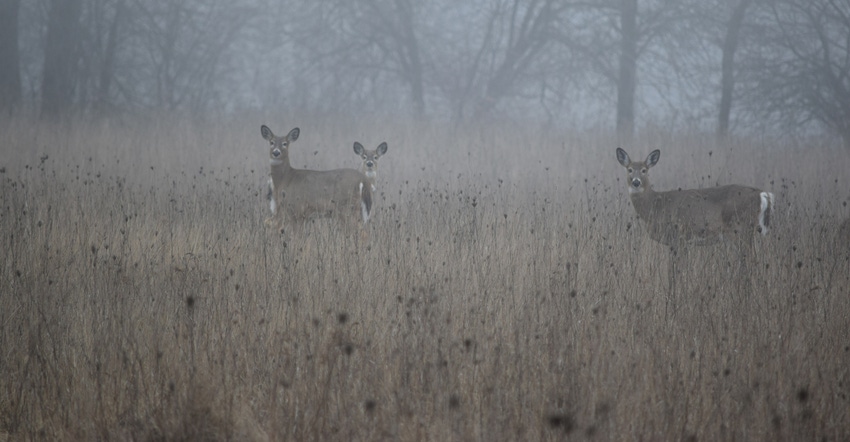May 12, 2017

By Alivia Roberts
Bovine tuberculosis has been a hot topic among cattle producers for some time now. TB was found in two beef herds in southeast Indiana in 2016, and was also identified in one harvested deer in the area.
So, recently, bovine TB has become a concern on the natural resources side of things. What most hunters in the area where cases have been documented are asking is this: How does bovine TB affect me, and do I need to be concerned about the future of hunting?
Joe Caudell, state deer biologist for the Indiana Department of Natural Resources, has been working directly with bovine tuberculosis in the area. He notes the level of concern within deer hunters and the IDNR is simply that the disease is now in the deer population.
“This might make it necessary to implement measures to try to control the disease,” says Caudell. “Controlling disease in free-ranging wildlife populations is expensive, time-consuming and difficult.”
That is the biggest concern right now; controlling the disease if necessary. Caudell and his colleagues are still discussing what the next few years will look like. It’s likely there will be another round of surveillance in the area. Deer hunters have been very cooperative so far in providing deer carcasses for inspection in a surveillance program in southeast Indiana.
TB impact on deer hunting
“To date, bovine tuberculosis has had little effect on the natural resources in the area,” says Caudell. “We conducted surveillance on hunter-harvested white-tailed deer, as well as some targeted surveillance of white-tailed deer on the affected farms.
“We have found only one positive deer and one positive raccoon, and both of those came off of one of the affected farms. That may indicate that this is a spillover event rather than an indicator that it is in the greater deer population in the area.”
A spillover event is particularly good news for IDNR and anyone invested in hunting. A non-native disease becoming established in wild populations is always a concern to Caudell and IDNR. However, this doesn’t put a red light on hunting in the area, he says.
“Deer hunting should remain the same,” says Caudell. “It’s actually beneficial for hunting to continue because if a disease is present, lower deer numbers, such as after the harvest, can slow the spread of disease.”
Roberts is a senior in Purdue University ag communication.
You May Also Like




